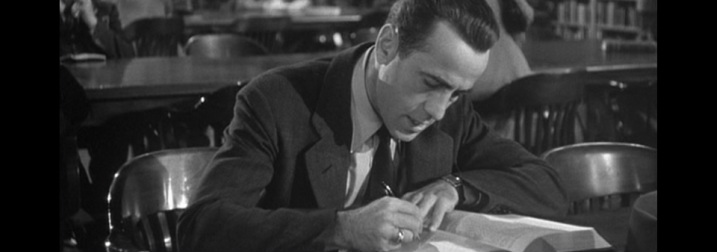Hot July brings cooling showers
Apricots and gillyflowers
In the Gaelic tradition, July is called the yellow month. The full moon on July 10th is called the Hay Moon.
For most of us in North America, the hot and humid Dog Days extend from July 3rd all the way to August 11th. They were named for the dawn rising of Sirius, the Dog Star, the brightest star in our heavens, after our sun. Sirius stems from the Greek “seirios,” which means “scorching.” The ancient Romans and Greeks believed that it was the combined heat of Sirius and the sun that produced the sweltering weather causing times of drought, violence and bad luck. In these days of climate change, it’s prime season for wildfire, which has burned thousands of acres of forest in the last decade.

Carving of the ancient Egyptian warrior goddess Sekhmet. This carving is on the wall of the Temple of Kom Ombo, which dates from the Ptolemaic period of Ancient Egypt.
Sekhmet, the lion-headed goddess of ancient Egypt, roamed the earth during the hot days of July. Her breath was the hot desert wind, bringing plague. One story tells about the time Sekhmet was sent to earth by her father, Ra, the sun god, to destroy the mortals who had not offered him sufficient sacrifice. Once the slaughter started, Sekhmet was filled with bloodlust and killed men, women and children, nearly annihilating the population. She was so fierce and bloodthirsty that the gods were afraid she would kill all of humanity.
Her father joined the other gods and poured out a lake of beer and dyed it with red ochre. Mistaking it for blood, Sekhmet drank and drank until she was far too drunk to continue killing. She returned quietly to Ra and the rest of humanity was saved.
As we move to a different pantheon, July 15th is the feast day of St. Swithin’s. According to British weather lore, if it rains on the 15th, we’ll enjoy forty days of wet weather.
St. Swithin’s Day, if thou dost rain
Full forty days it will remain.
St. Swithin’s Day, if thou be fair
For forty days, twill rain no mair.
St. Swithin was a 9th Century champion of the poor and a beloved bishop of Winchester. On his deathbed, he requested that his body be buried in the common churchyard beneath the feet of the passers-by and rain from the eaves. His grave was the site for so many miracles that the monks of Winchester exhumed his remains and buried them in a crypt within the cathedral. The saint was unhappy at the change of resting place. He wept for forty days and forty nights. The sodden monks returned St. Swithin to his former grave.
July 20th celebrates one of my favorites, the 14th Century St. Wilgefortis, or St. Uncumber as she is known by her followers. Her father promised her in marriage to the king of Sicily, and no amount of pleading would change his mind. The night before the wedding, Wilgefortis prayed to grow so ugly that the king would reject her. The next morning, she had grown a luxuriant mustache and beard. Her father was so furious he crucified her on the spot.
Wilgefortis promised her mourners that anyone who prayed to her would be free of the encumbrance of men. On July 20th, a woman unhappy in marriage can bring oats to her shrine to feed the horse that will carry her husband away.
In the literary firmament, we have William Strunk Jr., born on July 1, and author of the famous Elements of Style:
Place a comma before a conjunction introducing an independent clause…
The situation is perilous, but there is still one chance of escape.
Franz Kafka, whose novels and stories blended realism with a disturbing dreamscape. He’s best known for The Metamorphosis. He was born on July 3rd and died at age 40 from tuberculosis.
Nathaniel Hawthorne was born on Independence Day, most known by school children for The Scarlett Letter.
Robert Heinlein, Stranger in a Strange Land, was born on July 7th.
Both born on July 10th, Alice Munro won the Nobel Prize for Literature, Marcel Proust did not.
Born on July 11th, EB White is best known for Charlotte’s Web, and Jhumpa Lahiri for Interpreter of Maladies.
The brilliant poet, Pablo Neruda shares his July 12th birthday with Henry David Thoreau, whose retreat from the world at Walden Pond was a half-mile from the road to town. His mother often brought him food.
Iconoclast Hunter S Thompson was born on July 18th.
Ernest Hemingway was born on July 21st. His minimalist style changed the way we write prose.
But then there’s the florid, hilarious prose of Tom Robbins, Jitterbug Perfume, who was born on July 22nd and died this year at the ripe age of 92.
My hero, Raymond Chandler, was born on July 23rd. This is from his novel, Red Wind:
There was a desert wind blowing that night. It was one of those hot dry Santa Anas that come down through the mountain passes and curl your hair and make your nerves jump and your skin itch. On nights like that every booze party ends in a fight. Meek little wives feel the edge of the carving knife and study their husbands’ necks. Anything can happen.
We close on July 30th, the birthday of Emily Bronte, author of the haunting novel Wuthering Heights.










